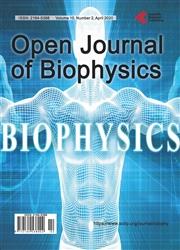Guided Folding of Life's Proteins in Integrate Cells with Holographic Memory and GM-Biophysical Steering
引用次数: 13
Abstract
The current geometric and thermodynamic approaches in protein folding studies do not provide a definite solution to understanding mechanisms of folding of biological proteins. A major problem is that the protein is first synthesized as a linear molecule that subsequently must reach its native configuration in an extremely short time. Hydrophobicity-hydrophilicity models and random search mechanism cannot explain folding to the 3-D functional form in less than 1 second, as it occurs in the intact cell. We propose an integral approach, based on the embedding of proteins in the whole cellular context under the postulate: a life protein is never alone. In this concept the protein molecule is influenced by various long and short distance force fields of nature such as coherent electromagnetic waves and zero-point energy. In particular, the role of solitons is reviewed in relation to a novel GM-scale biophysical principle, revealed by us. This recent finding of a set of discrete EM frequency bands, that either promote or endanger life conditions, could be a key in further studies directed at the morphogenetic aspects of protein folding in a biological evolutionary context. In addition, an alternative hypothesis is presented in which each individual cell may store integral 3-D information holographically at the virtual border of a 4-D hypersphere that surrounds each living cell, providing a field receptive memory structure that is instrumental in guiding the folding process towards coherently oscillating protein networks that are crucial for cell survival.生命蛋白质在整合细胞中与全息记忆和转基因生物物理转向的引导折叠
目前蛋白质折叠研究中的几何和热力学方法并没有为理解生物蛋白质折叠的机制提供确切的解决方案。一个主要问题是,蛋白质首先是作为线性分子合成的,随后必须在极短的时间内达到其天然构型。亲水性亲水性模型和随机搜索机制不能解释在1秒内折叠成三维功能形式,因为它发生在完整的细胞中。我们提出了一种完整的方法,基于蛋白质在整个细胞环境中的嵌入,假设:生命蛋白质从来都不是唯一的。在这个概念中,蛋白质分子受到自然的各种长距离和短距离力场的影响,如相干电磁波和零点能量。特别是,孤立子的作用与我们揭示的一种新的GM尺度的生物物理原理有关。最近发现的一组离散EM频带可能会促进或危及生命条件,这可能是在生物进化背景下进一步研究蛋白质折叠的形态发生方面的关键。此外,提出了另一种假设,其中每个单独的细胞可以在围绕每个活细胞的4-D超球体的虚拟边界全息存储完整的三维信息,提供场感受性记忆结构,该结构有助于引导折叠过程朝着对细胞生存至关重要的相干振荡蛋白质网络。
本文章由计算机程序翻译,如有差异,请以英文原文为准。
求助全文
约1分钟内获得全文
求助全文

 求助内容:
求助内容: 应助结果提醒方式:
应助结果提醒方式:


